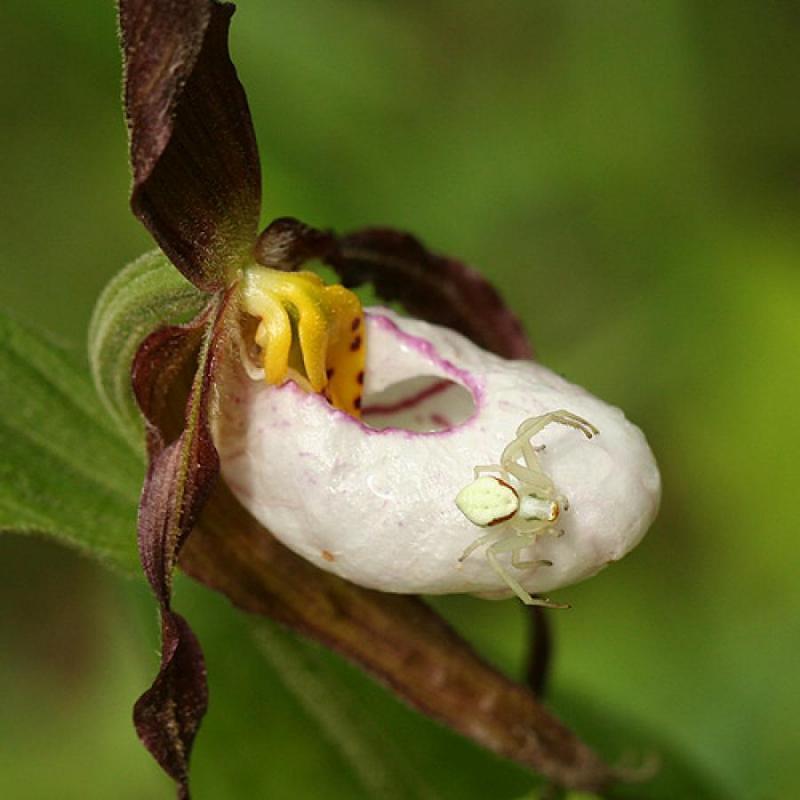Cypripedium montanum
Also known as: Mountain Ladies Slipper or Cypripedium montanum f. praetertinctum Cypripedium occidentale Cypripedium montanum f. welchii in the subfamily: Cypripedioideae
Native to: Arkansas - United States California - United States Canada Connecticut - United States District of Columbia - United States Georgia - United States Idaho - United States Illinois - United States Indiana - United States Iowa - United States Kansas - United States Kentucky - United States Louisiana - United States Maine - United States Maryland - United States Missouri - United States New Hampshire - United States New Jersey - United States North Carolina - United States Ohio - United States Oklahoma - United States Oregon - United States Pennsylvania - United States Texas - United States Utah - United States Virginia - United States Washington - United States West Virginia - United States Wisconsin - United States
General Information
Mountain Ladies Slipper is a large cold to cool growing terrestrial orchid belonging to the sub family Cypripedioideae native to United States and Canada.
Plant Description
Grows to 30cm. Each new growth has numerous lance shaped leaves that grow to 3-15cm long. Pseudobulbs grow to 70cm
Substrate(s)
- Coarse
- Spaghnum Moss
- Sand
Care Notes
These orchids grow on the forest floor so are used to rich soil containing plenty of organic matter that is always moist (but not always wet), and prefer constant conditions in terms of humidity, temperature and water supply. They may not be as forgiving as epiphytes in regards to sudden changes in growing conditions so it is wise to ease them into new conditions over a the space of a few days, and repot as infrequently as possible.
Keep an eye on the plants condition regularly as they can decline suddenly if the conditions are not just right. It is more important to keep water supply constant rather than frequent - overwatering often causes rot which can quickly set in, especially in warmer conditions.
These can be grown in shady, moist areas in the garden, supplied they have protection from abrupt changes caused by the elements, e.g. dry winds, frost etc. Being grown around companion plants such as ferns and bromeliads will help build and retain the humidity they require throughout the year.
Climate
These orchids thrive in humid, cool, shady conditions with good airflow, they will be found under dense forest canopies where they will receive moderate sun exposure throughout the year.
When cultivated they will thrive in a cool, sheltered environment such as a shaded greenhouse, or if grown in cooler climates they can be grown in the garden in areas where they are protected from frost and receive shade throughout the year, though they may be able to tolerate some morning sun during winter.
Grows at high elevations. Rainfall ranges from 5mm to 160mm per day, heaviest in January and lightest in August. Temperature ranges from -7C to 26C, highest in July (7C to 26C) and lowest in January (-7C to 2C).Fertiliser
Apply liquid based fertiliser per recommended directions. They can benefit from a high phosphate fertiliser leading up to flowering season, followed by a high nitrogen fertiliser when new growth appears, and a balanced fertiliser in other times. These orchids can also tolerate slow release fertiliser applied 1-2 pellets per cup (250ml) of media.
Use balanced fertiliser during Spring and Summer. Apply fertiliser regularly at half strength year round. Use a high Nitrogen fertiliser during Spring and Summer. Use a high Phosphorous fertiliser during Summer.Potting
These plants can be sensitive to repotting though should not require repotting regularly. Repotting should be done when the mix has broken down to the point that it doesn't absorb water or holds onto water for far too long, usually the plant shows a decline in growth as well.
The mix should be free draining, with a blend of 30% inorganic ingredients such as coarse sand, gravel or perlite, mixed in with about 70% organic ingredients such as peat, leaf litter or decomposed bark. Avoid commercial potting mixes as they can vary wildly and may contain "wetting agents" that can hold onto water for loo long, causing rotting and stunted growth.
Use water retentive media such as moss to prevent roots from drying out quickly




















